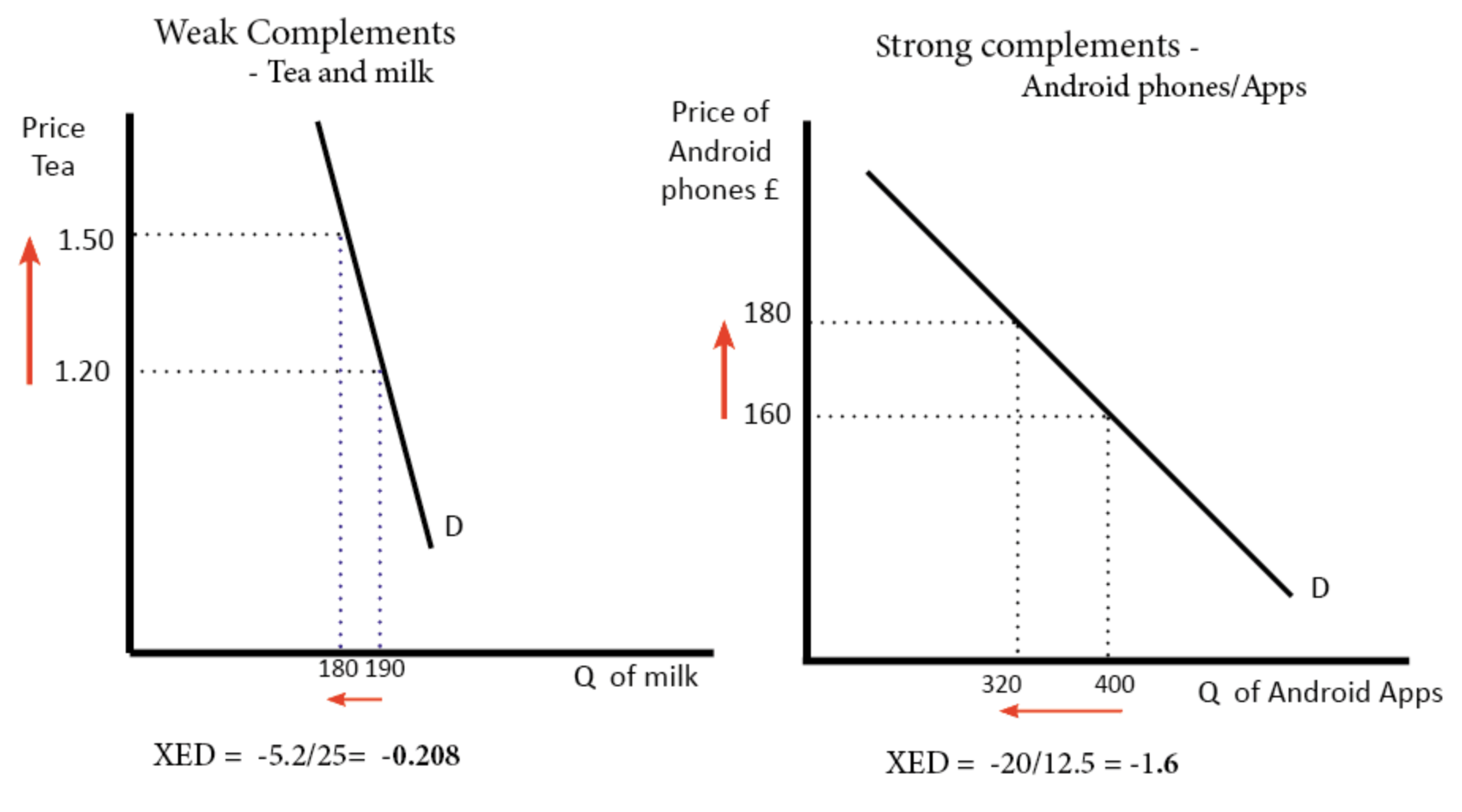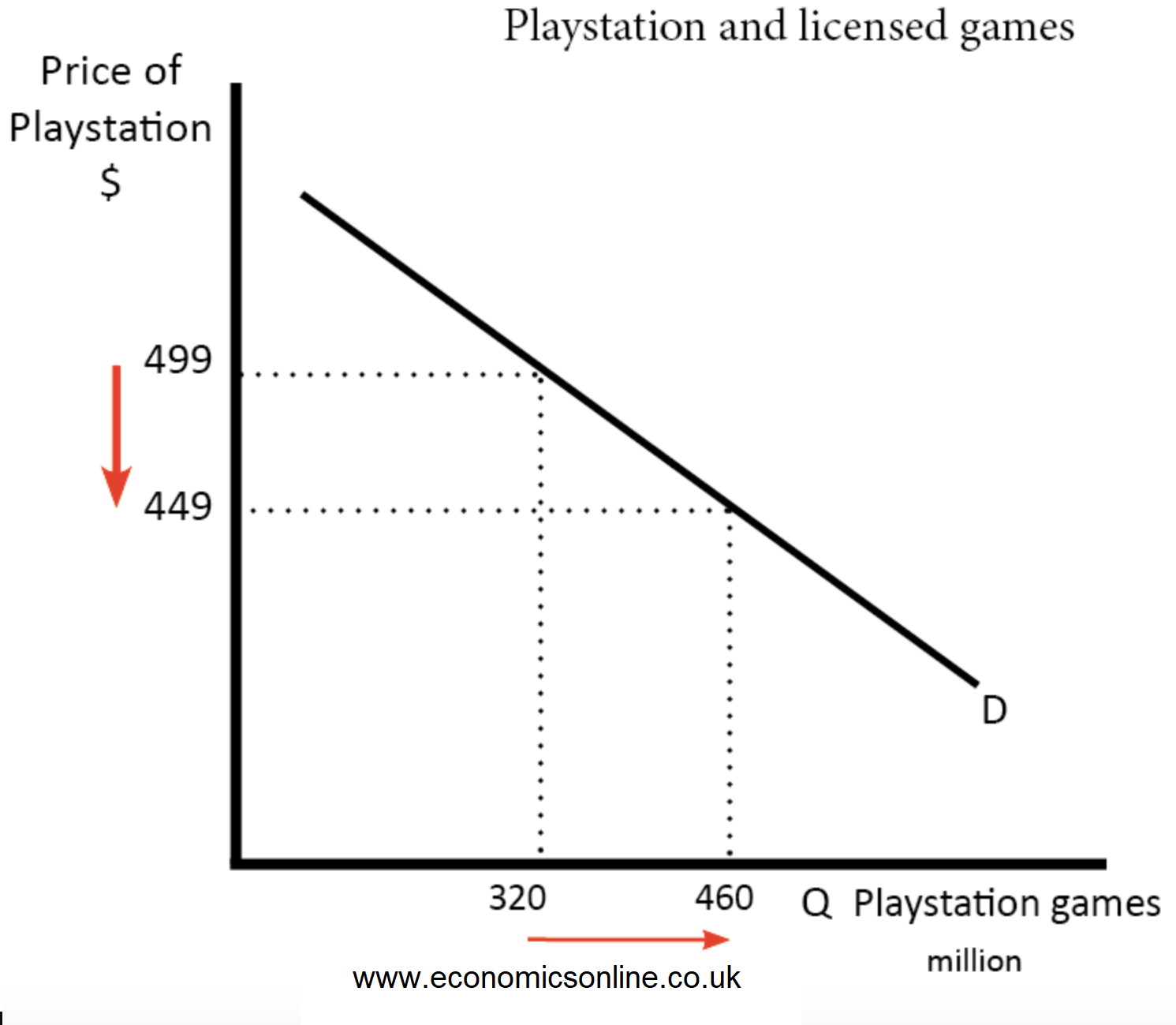
Top down view of various produce, illustrating complementary goods
Complementary Goods Defined
Products that are used together are called complementary goods.
Examples of Complementary Goods
- A video game console and the games that can be played on it
- Tennis rackets and tennis balls
- Mobile phones and mobile phone credit for sending texts and making calls
- An iPhone and apps
- A car and gasoline
Complementary Goods and Cross Elasticity of Demand
Complementary goods have a negative cross elasticity of demand. When one good’s price increases, the demand for both of the complementary goods will fall. The more closely linked these goods are, the higher the cross elasticity of demand.
If the complementary goods are only weakly linked, the cross elasticity of demand will be low. For instance, if the price of tea goes up, it’ll only have a marginal impact on the reduction of demand for tea and the consumption of milk.
But if the price of an Android phone increases, it’ll negatively affect its sales, reducing demand for Android apps.

How Firms Make Use of Complementary Goods
They increase related sales.
Supermarkets place related food items close together. You’ll see expensive pasta sauces next to pasta, for instance. The firm’s goal is to increase overall sales through the suggestion of possible related complementary goods.
They gain loyal consumers.
Firms can also implement the strategy of offering a base product at a low price. This is because they know that when consumers purchase the base product, they can increase sales of related add-on items. The owners of PlayStation, for instance, have an incentive to decrease the price of the PlayStation itself because they will then make more sales of licensed games. This increase in revenue offsets the fall caused by the lowered price.

Cutting back on the price of videogame consoles like PlayStation can help the firm increase profits on licensed games. Similarly, many printers have low prices because the firms that manufacture them want to make the most profit by selling compatible ink.

